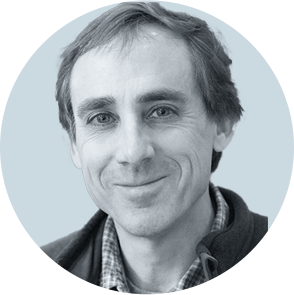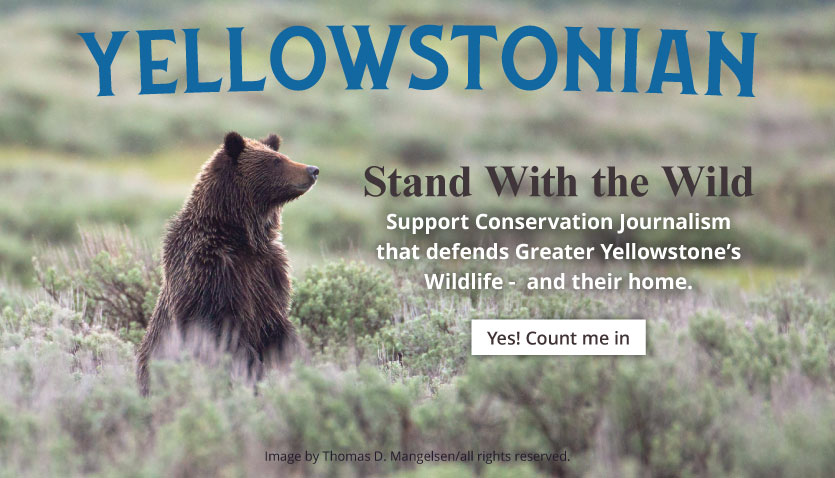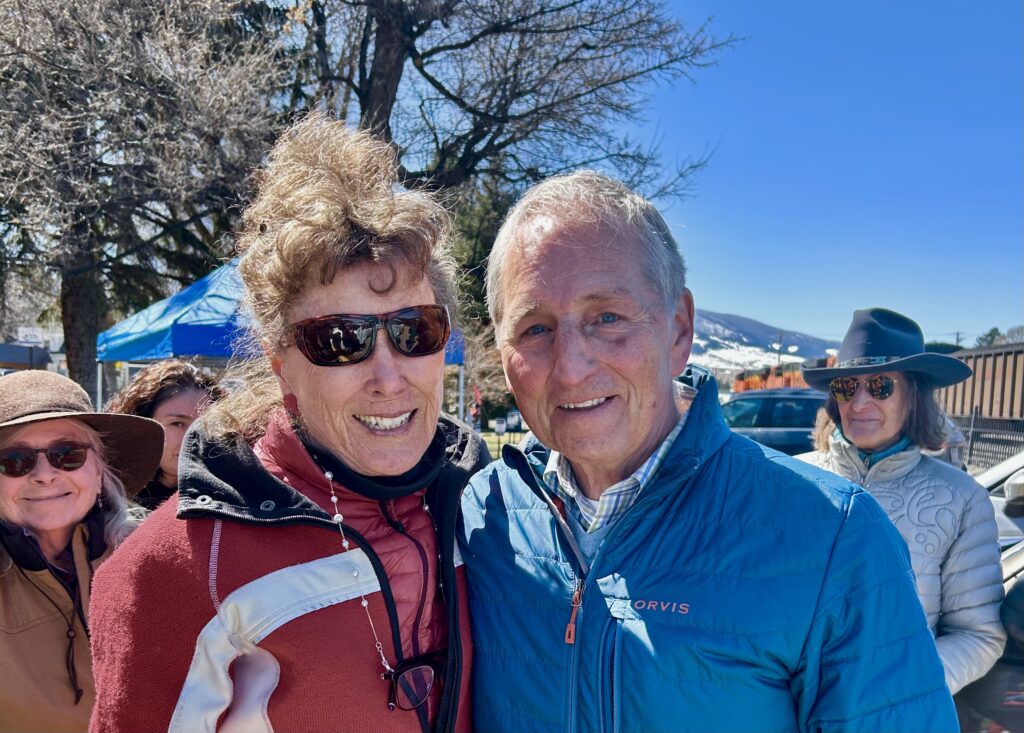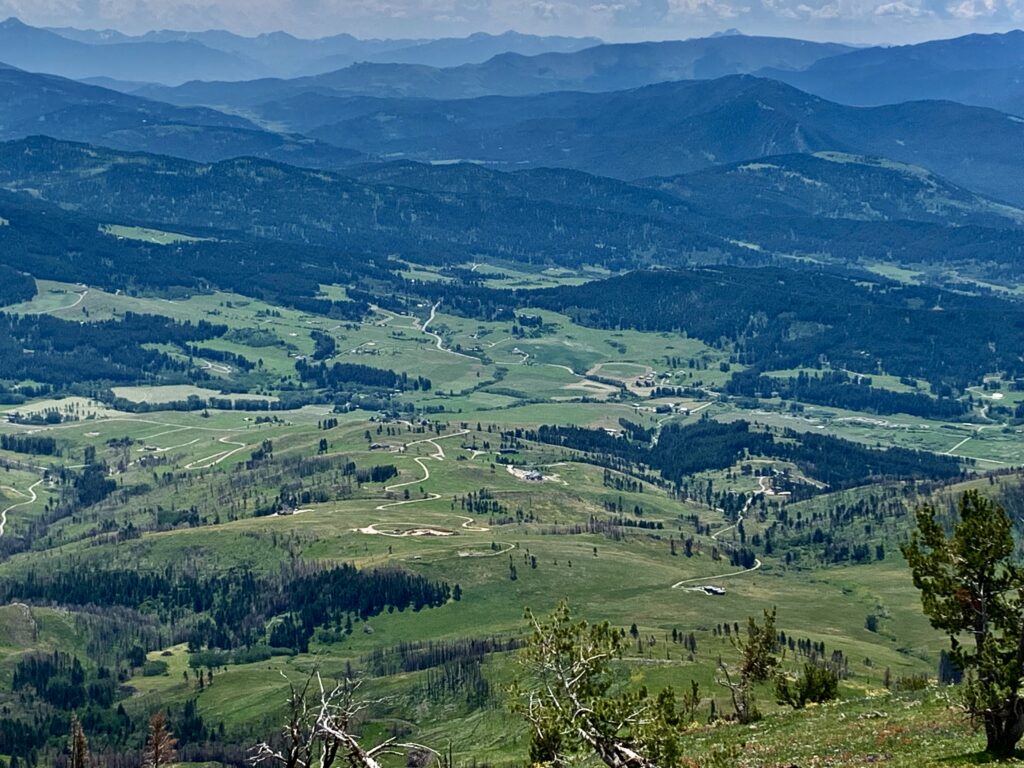By Todd Wilkinson and Gus O’Keefe
The most wonderfully-amazing thing that sets the Greater Yellowstone Ecosystem apart on Planet Earth comes down to one big word. Find it in the bruin-shaped word cloud image, below. Meanwhile, the greatest threat to its persistence can be summed up in three: growing-human-pressure.
The most immediate menace to Greater Yellowstone’s wildlife is not climate change. If we don’t shore up the wildness of this region now, and prevent its fragmentation, it won’t matter how severe the effects of climate change are in the middle of this century. The paradox is that a strategy aimed at securing the future of biodiversity is also the most effective strategy for confronting climate change. Healthy lands conducive to wildlife persistence store more carbon, protect clean water and air, and serve as critical buffers against carbon-intensive development and sprawl.
Yellowstonian aspires to be a voice for conservation journalism devoted to exploring the issues shaping this one-of-a-kind, wildlife-rich bioregion. Whether you call it home or not, it doesn’t matter; three quarters of Greater Yellowstone is comprised of federal public lands and guess what, they belong to you. One fourth of the mosaic is comprised of private property residing in 20 counties which play a critical role in determining the health of the public lands—and vice versa.
Roaming across all of it, some navigating ancient pathways traveled by native people and fauna going back to the Pleistocene, is a concentration of animals, especially large mammals, unmatched in the Lower 48 and most of the world.
This is exciting.
For many, seeing a grizzly bear or hearing a pack of wolves howl, encountering a herd of wild bison, elk or pronghorn, spying a moose, bighorn sheep or mountain goat, catching a glimpse of angelic trumpeter swans sailing above a misty river, casting for a Yellowstone cutthroat trout with a dry fly, or just immersing oneself in panoramas of big spacious views and chiseled summits; these are remembered as experiences of a lifetime.

Together, as members of tribe Yellowstonian, we’ll be exploring ways we nature-loving people think about wildness in our own back yard—no matter where we live. Take a look again at the word-cloud graphic of a grizzly bear and inside its outline you’ll find ample cause for awe as well as the reasons why, more than ever before, we need to be wide awake and paying attention. Wildlife is being relentlessly squeezed by many forces.
Once upon a time, the late David Brower said that no conservation victory is ever permanent; that we are destined, in the face of greed, to continuously fight the same kinds of battles over and over again, often in similar but different forms. We’re not growing the boundaries of Yellowstone, Grand Teton, wilderness-caliber public lands; they’re finite and studies show they are not sufficient enough to support the level of wildlife abundance we relish.
A few years ago, David Hallac, who then served as lead scientist in Yellowstone, shared this sobering thought: “This might be Greater Yellowstone’s brief halcyon time; in other words, this might be as good as conservation is ever going to get and from now on forward, things start going downhill, unraveling.” Such a scenario is not inevitable but preventing it from happening means confronting not just Greater Yellowstone’s demise via death by 1,000 cuts, but its lethal lashing of death by 10,000 thoughtless scratches. Little insidious things. There’s a false premise of prosperity present in the land-grab, boomtown mentality of developers and the real-estate industry based on dubious free-market shibboleths that the answer is no regulation and no limits on human ambition.
As of right now, there is no plan to confront the erosion taking place, which is ever present and undeniable. Dr. Thomas Kaplan, who founded Panthera, the leading wildlife conservation organization devoted to protection of wild cats in the world, says: “The path of least resistance is often inertia.”
Ponder that. It’s not a lack of options that is the problem; it’s ours resignation to accept the loss of things we can choose not to surrender. If we fail to safeguard Greater Yellowstone now or squander the opportunity in the few years ahead, there will not be another chance to reclaim what vanishes.

Given the magnitude of change that is happening, we’re witnessing the erosion of the essence of this place—an outcome that for most of us is totally unacceptable. We believe compelling storytelling and gripping imagery can be a powerful force in preventing the de-wilding of this larger magical physical and conceptual realm that is home to Yellowstone, the world’s first national park.
In the word cloud, search for the source of your inspiration. Pick your issue. Devote your time to the passion places where you fit into the conversation. Be brave in the way you can make a positive difference. We welcome you.
°°°°
Yellowstonian formally begins here, now. We aim to make an impact. Journalism does not exist merely to present information/facts/data without context. Its role is not to be like a court stenographer passively taking notes or documenting events as they happen which almost always leaves readers being behind the curve, putting them in reactionary or defensive posture.
Yellowstonian is here to provide the kind of food for thought and hard earned perspective that you find fascinating and relevant, while simultaneously giving you a big picture overview on the consequences of inaction and where trendlines are heading. Fragmented superficial reporting only leads to fragmented thinking, and fragmented thinking results in fragmented landscapes. Writing about the multiple dimensions of an ecosystem requires being fluent in discussing them.
Before we launched this website, we first wanted to establish a solid baseline of readers. Hoping to attract 1,000, we just surpassed 12,000 on Facebook and we hope you’ll help us spread the word of our existence.
Yellowstonian is founded by Todd Wilkinson and Gus O’Keefe. We’re teaming up again nearly seven years after we launched Mountain Journal. We’re excited by this new forum and couldn’t be more grateful—or pleased—that Yellowstonian is operating as a non-profit under the banner and sponsorship of Artemis Institute, the brainchild of Lori Ryker. Artemis has been a leader in educating its followers about the importance of place-based thinking. If you want gripping stories about wild nature and wildlife, you can support Yellowstonian by making a financial gift to Artemis, which is a registered 501(c)(3) and your gift is tax deductible
In Greater Yellowstone we find ourselves as a crossroad; before us is an exceedingly rare moment, and it involves a pivotal choice and an ongoing series of daily smaller ones that will determine the fate of the bigger picture. We all need to ask ourselves: Does the persistence of wildlife matter? We’re assuming that, for each of you, it does. If that’s the case, then we need to decide what we’re willing to do—as individuals, as a society, as residents of communities, as public land managers, elected officials and as citizens what we’re willing to do to put actions to those values.

Kristine McDivitt Tompkins, a former executive at the clothing company Patagonia and who together with her late husband, Doug, applied their resources to fearlessly establish a new generation of terrestrial and marine protected areas in Chile and Argentina, has astutely said, “We have to remember that landscape without wildlife is just scenery.” Tompkins is a major proponent of protecting Greater Yellowstone and re-wilding other areas as a way to confront the biodiversity crisis.
Yellowstonian will not be a vehicle for Pollyannas, nor will we pander to cynics, slackers, doomsayers and indulge the apathetic. We’re going to tell wildlife-adoring readers what they need to hear, not what denialists wearing rose-colored glass want to hear. Such reporting may make some feel uncomfortable, or angry; it might be in inconvenient contradiction to the status quo and force us to reflect on our own behavior. Some of our stories will hopefully compel us to adjust our mindset.
We ought to remember that if earlier generations had not exhibited courage, Yellowstone National Park itself would not exist; the lands of our region would have been overwhelmed and subsumed by the same kind of frontier mentalities that left behind a legacy of near-extinction for many species, indigenous people removed from homelands, and the wreckage of Manifest Destiny. Examples are thousands of miles of polluted rivers sullied by toxic tailings from abandoned hardrock mines, clearcuts that eviscerated forests, unregulated livestock grazing and accompanying predator eradication, along with other forms of extraction that transformed much of the West into a glorified natural resource colony.
Many of the Draconian forces that gave rise to that kind of thinking remain and some are embedded in antiquated public policy. Today, Manifest Destiny 2.0 is alive and well and the focus has shifted from public to private land where a rapidly expanding human footprint is threatening to negatively transform our river valleys and it’s squeezing the ecological function of public lands.
Greater Yellowstone is a realm where humans of the past established a legacy of refusing to be inert. They looked ahead beyond their own time and did things that, from a conservation perspective, have accrued exponential value and importance across each new generation.
In light of that legacy, do we quit trying to forever secure the baseline of land protection and wildlife conservation in Greater Yellowstone that is held up as a miracle in the world, or do we up our game?

At Yellowstonian, we love Greater Yellowstone and we believe the most important action we can take is to elevate public awareness of what’s at stake, what we stand to lose, and the things that threaten the region, whose fate has implications for the rest of the world.
We will continue to state this, and apparently, we can’t state it enough because some fail to heed the truth: Greater Yellowstone is different from all the rest. It deserves our immediate attention because if we can’t hold onto it, and prevent its de-wilding, how much faith can we really place in efforts to re-wild?
Our friend, the visionary conservationist Greg Carr, who grew up in Idaho Falls and is leading the rewilding of Gorongosa National Park on Mozambique after a devastating civil war, is leading by example. He says it’s not just bringing species back but inviting Mozambiquans to devise new less destructive approaches to co-existence.
Wild nature will not persist if co-existence, reciprocity, sustainability, balance, diversity, equity, inclusion and justice are only homocentric terms invoked to materially benefit the human animal. Such concepts and the positive outcomes they purport to advance will only take on deepest meaning in Greater Yellowstone and other wild places if they are applied with sincerity to all inhabitants.
To repeat our message delivered at the outset of his introduction, take a look at the word-cloud graphic of a grizzly bear again and inside its outline you’ll find cause for awe as well as the reasons why, more than ever before, we need to be wide awake and paying attention. Please increase our existence value by letting your friends know about us on Facebook, Intagram, LinkedIn and X. Please stay in touch.
Subscribe
Never miss a story, subscribe to our newsletter!







